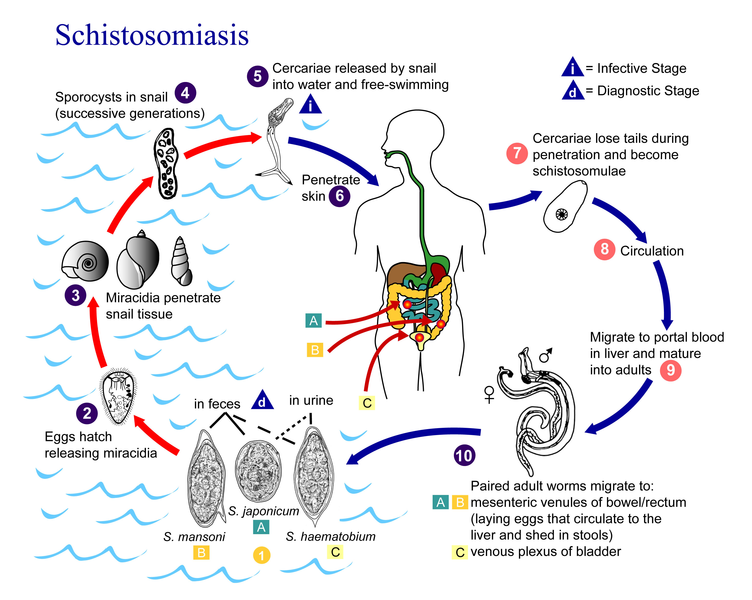Faili:Schistosomiasis Life Cycle.png

Ukubwa wa hakikisho: piseli 752 × 600. Ukubwa zingine: piseli 301 × 240 | piseli 602 × 480 | piseli 963 × 768 | piseli 1,280 × 1,021 | piseli 2,560 × 2,042 | piseli 2,936 × 2,342.
Faili halisi (piseli 2,936 × 2,342, saizi ya faili: 1.94 MB, aina ya MIME: image/png)
Historia ya faili
Bonyeza tarehe/saa kuona faili kama ilivyoonekana wakati huo.
| Tarehe/Saa | Picha ndogo | Vipimo | Mtumiaji | Maelezo | |
|---|---|---|---|---|---|
| sasa hivi | 21:05, 21 Septemba 2010 |  | 2,936 × 2,342 (1.94 MB) | Leyo | {{Information |Description={{en|Eggs are eliminated with feces or urine (1). Under optimal conditions the eggs hatch and release miracidia (2), which swim and penetrate specific snail intermediate hosts (3). The stages in the snail include 2 generations o |
Matumizi ya faili
Hakuna kurasa zozote zinazotumia faili hii.
Matumizi ya faili ulimwenguni
Wiki nyingine hutumia faili hizi:
- Matumizi kwa ar.wikipedia.org
- Matumizi kwa arz.wikipedia.org
- Matumizi kwa ceb.wikipedia.org
- Matumizi kwa cs.wikipedia.org
- Matumizi kwa de.wikibooks.org
- Matumizi kwa en.wikipedia.org
- Matumizi kwa es.wikipedia.org
- Matumizi kwa fr.wikipedia.org
- Matumizi kwa hu.wikipedia.org
- Matumizi kwa hu.wikibooks.org
- Matumizi kwa ml.wikipedia.org
- Matumizi kwa nl.wikipedia.org
- Matumizi kwa pl.wikipedia.org
- Matumizi kwa sv.wikipedia.org
- Matumizi kwa uz.wikipedia.org
- Matumizi kwa vi.wikipedia.org

